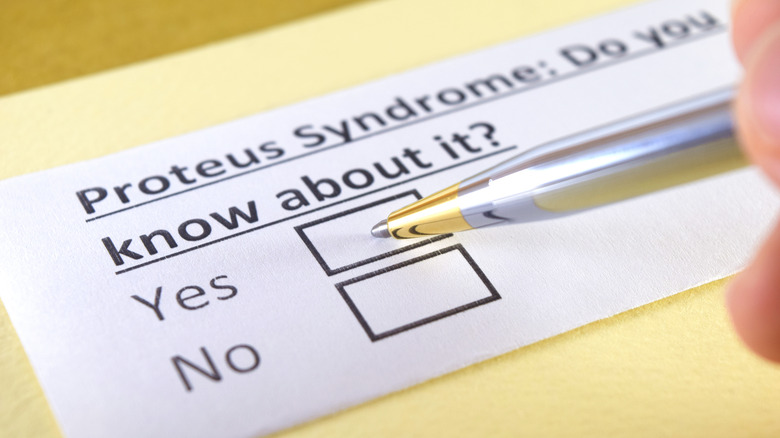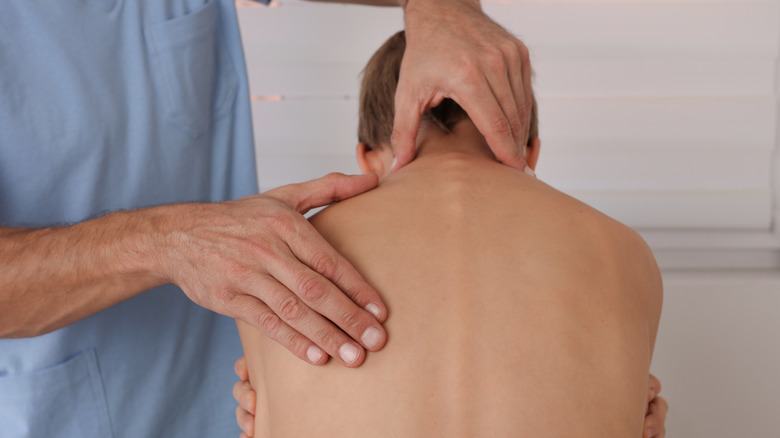The Mysterious Disease That Causes Your Body To Grow At Different Rates
The rarest diseases may go largely unnoticed by the greater population because they're, well, rare. But one of these conditions, Proteus syndrome, is so uncommon that only around 200 cases of it exist in medical literature (via WebMD). Proteus syndrome causes some cells in the body to grow and divide at abnormal speeds, resulting in the overgrowth of some parts of the body.
Proteus syndrome is caused by a random genetic mutation in one cell of a developing fetus during early stages of pregnancy (via Proteus Syndrome Foundation). The mutation occurs in the AKT1 gene, which is responsible for cell growth. Some cells will get the mutation and others will not, which is why overgrowth only occurs in some parts of the body and not others.
There may not be any signs of the condition at birth, but between 6 and 18 months of age, overgrowth becomes apparent, often affecting the left and right sides of the body differently. Common symptoms include abnormal growth of the limbs or extremities, raised areas of skin, spinal curvatures, benign tumors, overgrowth of skin on the soles of the feet, and overgrowth of fatty tissue specifically on the arms, stomach, and legs (via WebMD). This can cause mobility issues, cognitive disabilities, nervous system problems, and pulmonary embolisms.
The outlook for those with Proteus syndrome
Since Proteus syndrome can be so complex, patients will require individualized treatment based on specific medical needs, according to the Proteus Syndrome Foundation. A patient's medical team might consist of a geneticist, dermatologist, orthopedic surgeon, pulmonologist, and physical therapist, as well as a primary care physician. While many symptoms won't require aggressive treatment, doctors may still monitor affected parts of the body as the disease progresses.
There's currently no cure for Proteus syndrome, and treatment usually consists of managing symptoms (via Healthline). Sometimes surgery is recommended to remove skin overgrowths, excess tissue, or growth plates in the bone. Treatment can also include physical therapy.
While the syndrome can greatly impact quality of life, people living with it can still age normally. Some research shows that the disease moderates after adolescence, which highlights the importance of early detection, diagnosis, intervention, and monitoring (via Genetics in Medicine).


